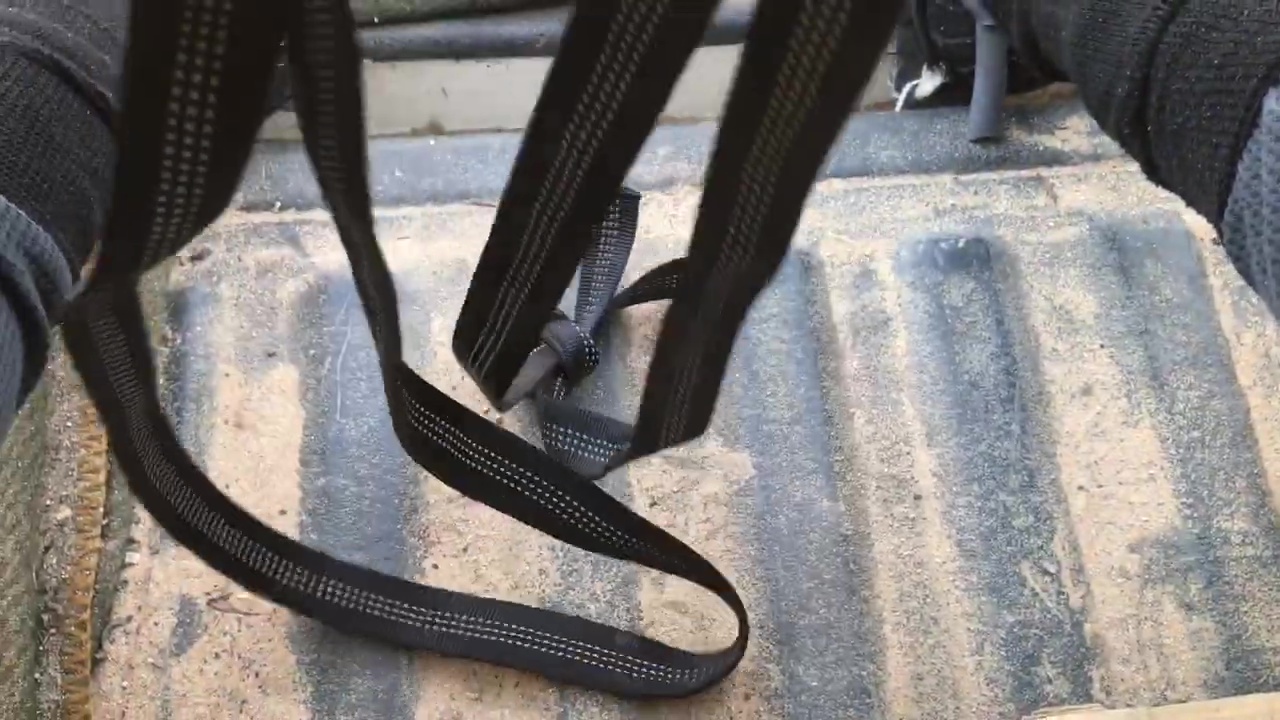
01 Making A Loop With A Length of 1 Inch Webbing
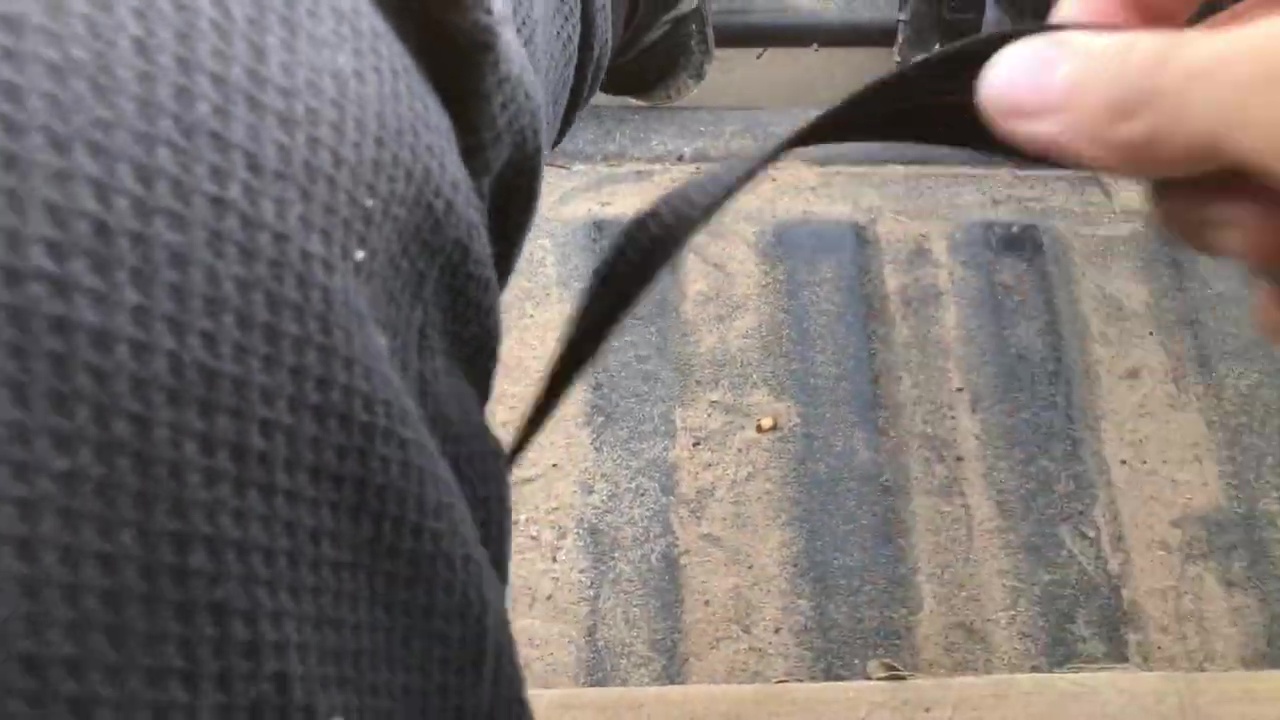
02 Sitting Into Loop And Joining Three Corners In Front And Both Sides Of Legs
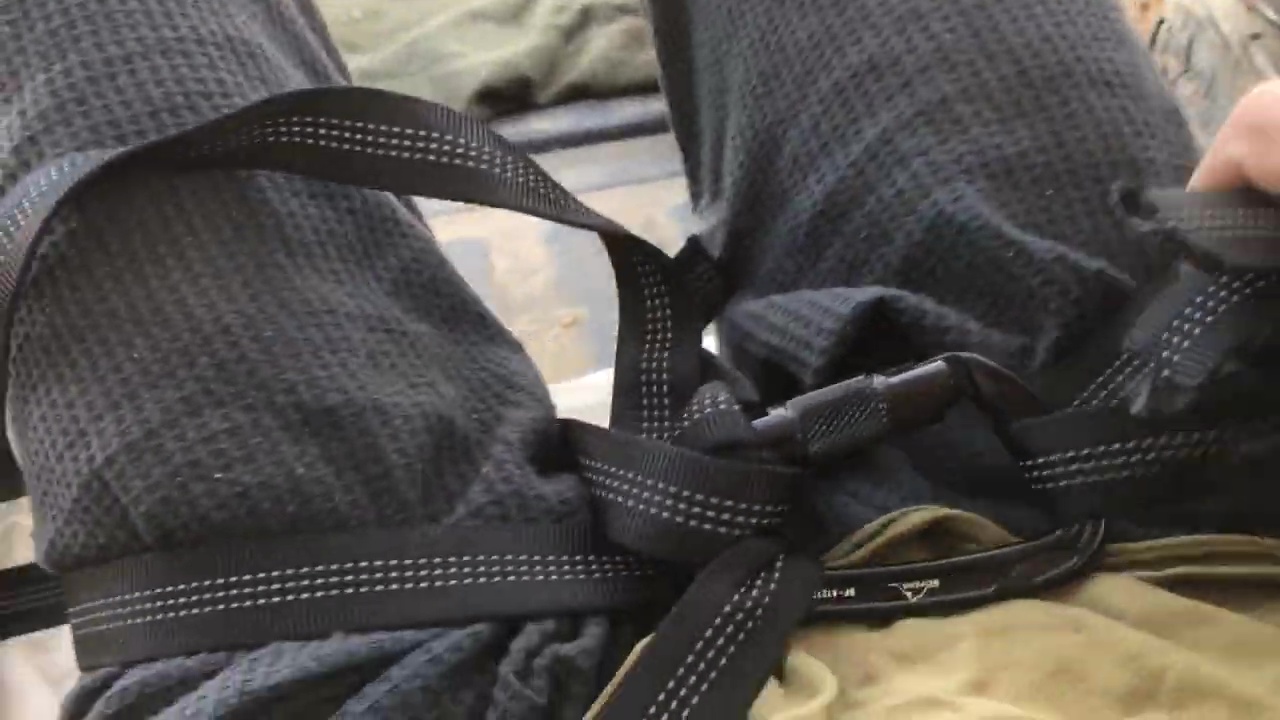
03 Securing Three Loop Corners At Front of Pelvis With A Climbing Carabiner
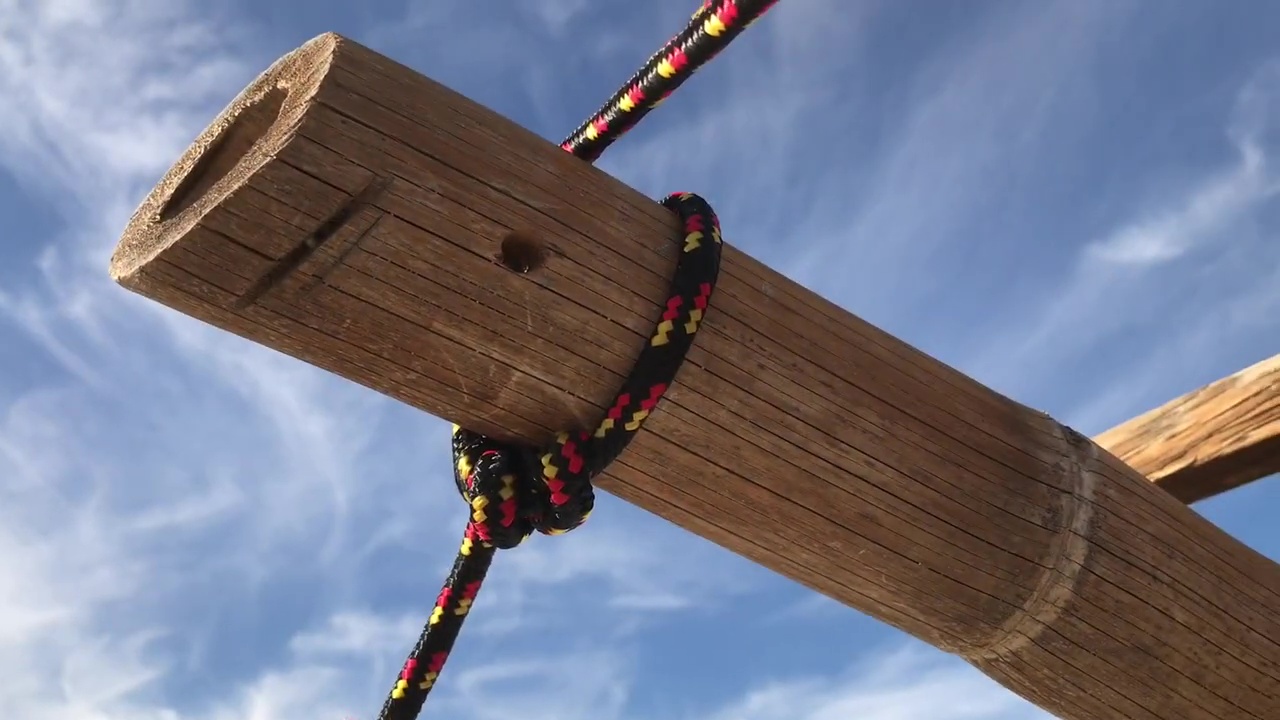
04 Running Climbing Rope Line Above Head Height Along Truck Camper
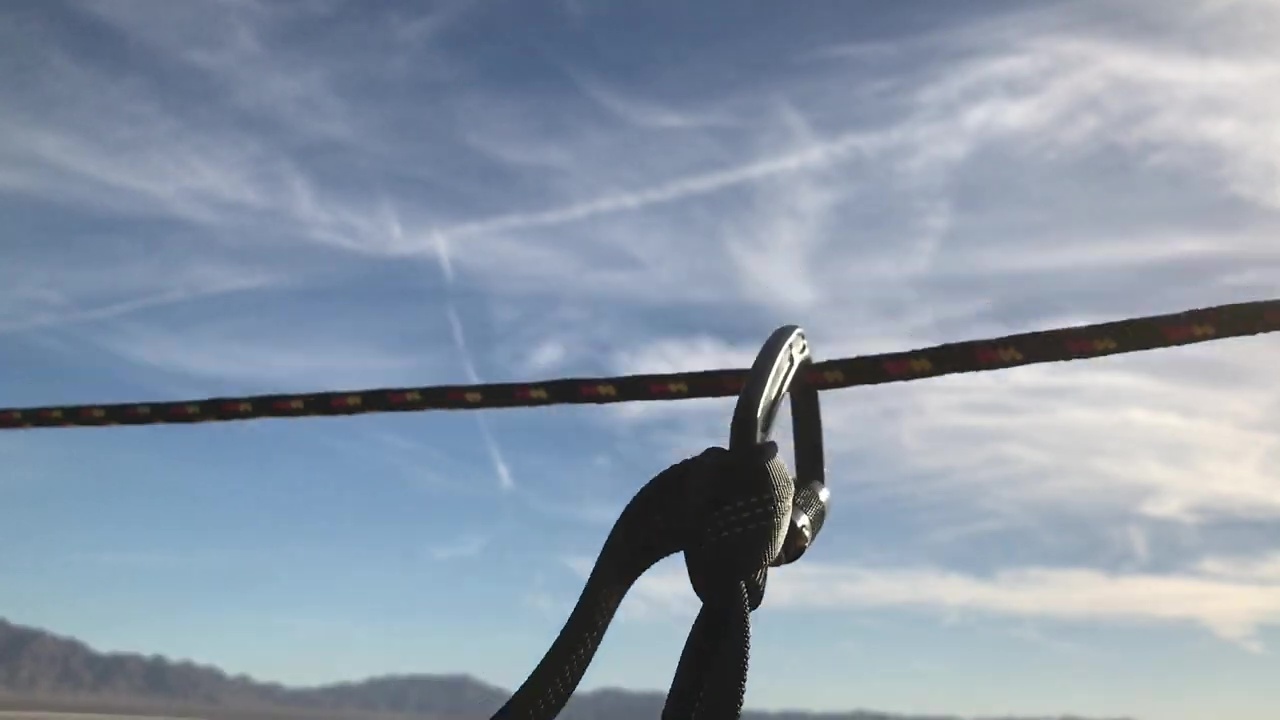
05 Securing Lobster Claw Carabiner At End Of Length Of Webbing Attached To Harness
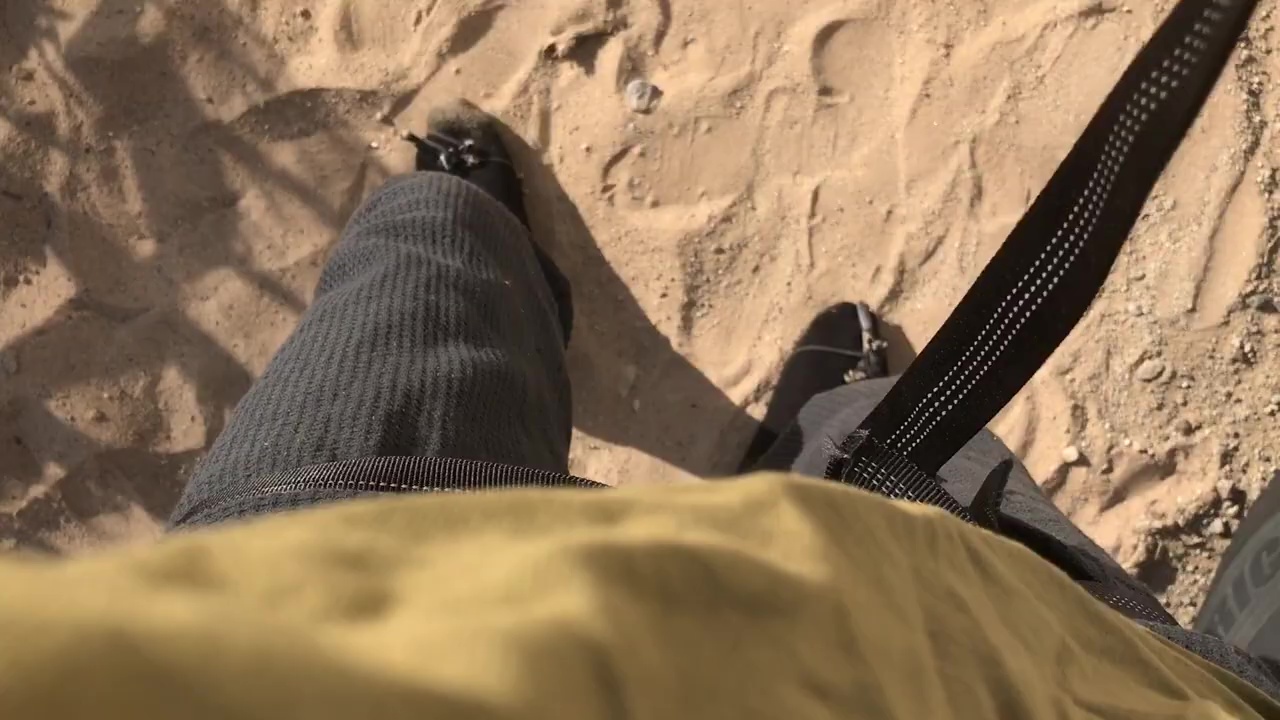
06 Relearning How To Walk With Webbing Harness On Support Rope Line
Disability Life Hack Emergency Climbing And Rescue Harness Tube Webbing And Carabiners to Rehab Legs
I remembered the so-called "lobster claw" technique as well as the simple webbing loop harness from my days of forest defense tree-sitting years ago in the pacific northwest. I learned a lot of knots and rope climbing techniques. I was taught that if ever in an emergency where you need to rescue someone or even yourself but you don't have a standard rock or tree climbing harness, it's possible to make a temporary emergency harness with just a tied loop made from a length of 1 in or wider webbing material.
It's a very elegant concept that I'd probably never think of on my own. As a matter of fact, a loop made from webbing can become a simple life saving rescue harness by simply making the loop, sitting down into the middle of it, pulling the section between your legs up to your pelvis, then pulling the sections on either side of your pelvis to meet the front section in the middle of the pelvis. You then secure the three corners together with a climbing carabiner and you have a basic harness. It's not comfortable and you wouldn't want to be in it for long, but in terms of relatively safely lifting full body weight in a way that's secure, reliable, and unlikely to fail or fall off, this is treasure of a design.
The webbing will dig into the skin a bit, but the way it holds the bodies weight like a seat, it doesn't put disproportional stress on any joints or weak points. It's the perfect solution for emergency situations.
Luckily I remembered it as I was starting to build up the confidence to start to try to walk again after two months of temporary disability from an acute injury. I didn't know or trust that I could hold my weight standing up, and to fall and get injured again, potentially even worse, and/or lose consciousness and by attacked by wildlife, it was big risk to try. I eventually felt I had to start taking action but I'd do so with the help of this emergency climbing harness system including the "lobster claw".
I was taught to always have a minimum of one point of safety while climbing trees without a dedicated climb line. In other words, there are standardized methods for climbing up a rope, but if you're climbing a trees limbs or trunk without a secure climbing line to anchor onto, you have to maintain anchors by other means. The lobster claw technique is named based on the way it looks. You have two lengths of webbing each tied at the lower end to your climbing harness, then at the other end they're tied to carabiners. This allows you to wrap the end of one of the "claws" around a tree limb, clip it back onto itself with the carabiner, and release the other claw to be secured to a higher limb on the tree. This way, at all times, one claw is free to climb up, while the other is secured.
I only needed one claw for this walking rehab experiment, as I wasn't climbing up but rather sliding horizontally along the rope as I took tiny steps. Before walking I tested dropping dead weight against the line and it held my weight just fine. I was then able to start taking small steps with confidence. I quickly felt pains in my feet, so had to be mindful and work my way up to more walking. Within a few days and a few of these anchored hikes back and forth along the length of a truck, I started to feel that I could venture off and walk again slowly with a walking stick. Within a week or so, I was able to get around. It took about a month of limping before I was back to 100%, but it was nice to know that this contraption played a crucial role in my gaining the confidence to dare to try to talk again. Had I not used it and tried to walk on my own, I would very likely have made the injury worse, and tempted fate by risking more and worse injuries.